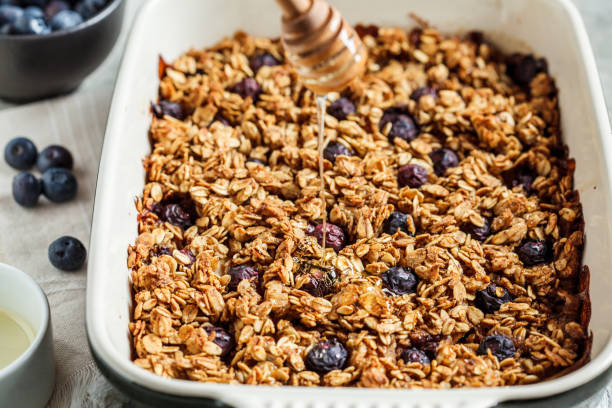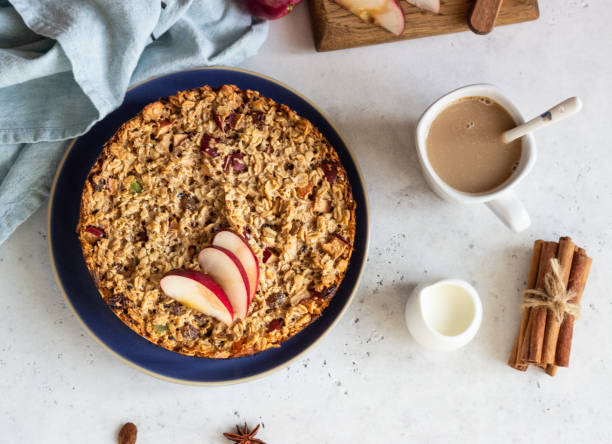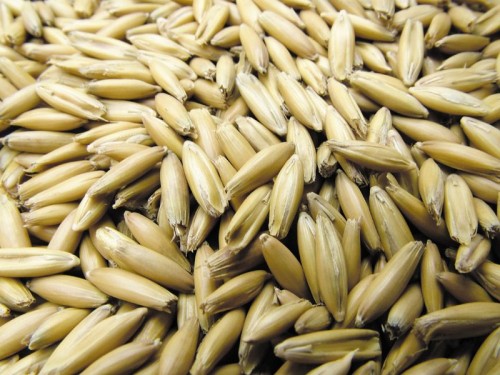Baked oats have become popular as a breakfast trend on TikTok. And rightly so, because the baked oatmeal tastes like cake for breakfast. We’ll show you how to make baked oats yourself.
Baked oats have been arguably the most popular breakfast trend on social media for a while. Although they are very similar to baked oatmeal, i.e. baked porridge, they do have their own reason for being. Because thanks to the finely ground oat flakes, baked oats have a finer and juicier consistency.
For the Baked Oats you need a blender in addition to a few basic ingredients. With this you have prepared the dough in a few minutes. The basis for the baked oats is oat flakes, plant milk, banana, dates or maple syrup for sweetness.
It is best to buy the ingredients in organic quality. In this way you support organic agriculture that does not use chemical-synthetic pesticides, which could end up in your food and in the environment. Recommended organic seals are, for example, Demeter, Naturland and Bioland. For products such as chocolate, cocoa or vanilla, you should also pay attention to Fairtrade certification. The seal shows you that the product was manufactured and traded under acceptable social conditions.
We will show you a basic recipe for vegan baked oats with light and dark variants. Of course, you can change the recipe as you like.
Vegan Baked Oats: Basic recipe for two servings

Ingredients:
80 goat flakes
240 ml plant-based milk
1ripe banana
3dates
1 tablespoon peanut butter
1 teaspoon Baking powder
0.25 tsp salt
vanilla (optional)
1 ELFairtrade cocoa powder
fair trade dark chocolate
Directions:
Add oatmeal, plant-based milk, ripe banana, pitted dates, peanut butter, baking powder, salt and optionally some vanilla or other spices such as cinnamon to the blender and blend the ingredients into a viscous paste.
For the light variant, fill half of the dough into a small ovenproof dish. You can also use an ovenproof cereal bowl or a screw-top jar here.
For the chocolate version, stir the Fairtrade cocoa into the rest of the batter and fill the second mold with it. The chocolate version tastes particularly delicious with a teaspoon of peanut butter as the core.
Top the cakes with chopped dark Fairtrade chocolate, nuts or other ingredients of your choice and bake them in a preheated oven at 180 degrees for about 20 minutes.
The baked oats taste warm or cold and keep in the fridge for several days.
Baked Oats: Tips and variations for a healthy breakfast
You can change the ingredients according to your own taste. Instead of peanut butter, almond butter or hazelnut butter go well with it and you can replace the dates with a sweetener of your choice, for example: maple syrup, apple syrup, date syrup or sugar alternatives such as stevia or birch sugar.
You are in control of the length of the baking time. If you prefer a mushy, porridge-like consistency, remove the cakes from the oven after about 20 minutes. For a firmer, cake-like texture, bake them for 25 to 30 minutes. You can do the chopstick test as a test. The baking time also depends heavily on the shape and size of your molds.
Ideas for variations on vegan baked oats:

Baked oats without banana: For a more neutral taste, you can mix the banana with 100 grams of apple pulp or with 1.5 tablespoons of ground flaxseed and 5 tablespoons of plant-based milk (leave to soak before use). Alternatively, the baked oats also work well if you simply leave out the banana and add a little more milk or plant-based yoghurt instead. However, since the banana brings a lot of sweetness with it, you may have to sweeten it here.
Baked oats with a liquid core: Put a teaspoon of nut butter, jam, some chocolate, chocolate cream or a dollop of vegan yoghurt or vegan cream cheese mixed with maple syrup in the middle of the mold.
Additional toppings and ingredients: In addition to chocolate and nuts, grated coconut, cocoa nibs, dried fruit, blueberries or finely chopped fresh fruit also go very well with the recipe. You can also refine the cakes with poppy seeds and grated lemon zest, for example, or make a carrot cake variant with grated carrots, raisins and walnuts.







